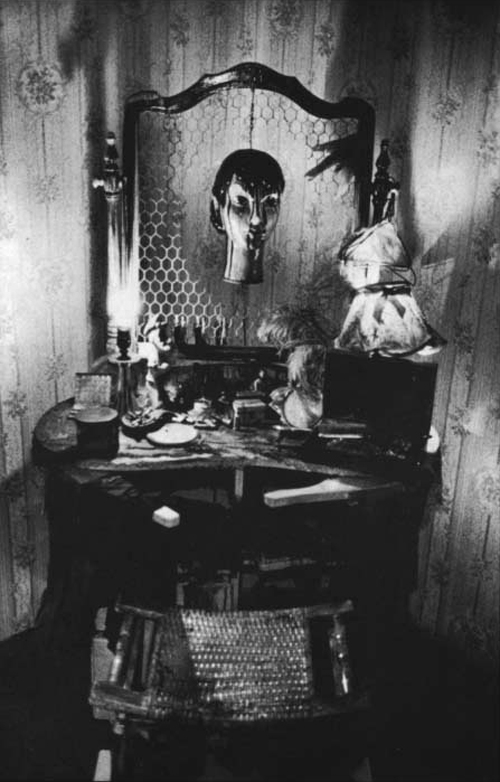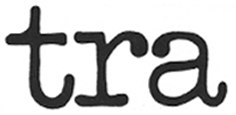ROXY'S - 1961
Furniture, bric-à-brac, live goldfish, incense, disinfectant, perfume, juke-box, clothing etc.
Kienholz earlier works, up to 1958/59, were usually made from bits of junk and trash (“leftovers of human experience”). These works take the form of wall-hanging, bas-relief structures, usually painted in a completely fluid manner while laying face up on the studio floor. They were done very quickly using a broom as paintbrush. The low relief structure, in this case, became as lines to a drawing, not changing as the paint flowed over the surface. His method at that time was to do five or six such works for week for perhaps two or three successive weeks.  As the relief structure grew more pronounced and protruded further from the surface, the paintings became “top-heavy”, finally demanding space on the floor. At this point, Kienholz should be thought of as a sculptor instead of a painter, although his continued concern for surface is vital to all of his later works. Zoe, one of the prostitutes in “Roxy’s”, was conceived in a similarly rapid and impulsive way. It was sometime later that a second figure emerged, Fili, a lost angel. At this point, Kienholz decided to build yet additional figures and place them all in an appropriate whorehouse environment which he then named “Roxy’s” after a famous Las Vegas brothel. This piece was first exhibited in 1961 at the Ferus Gallery in Los Angeles. Kienholz coined the name “tableau” for this environment after the staged, costumed, stop-action presentations seen in his youth in rural churches and grange halls. The time in “Rosy’s” is 1943. lt can be dated by the calendar and magazines, the clothing styles, the juke-box tunes and the call-to-arms portrait of general MacArthur. In certain later works by Kienholz, a specific period is also evoked.
Although Kienholz has been labelled a social critic, it is interesting to note that the moral tone of “Roxy’s” is a neutral reflection of the times… “You can’t have a whorehouse without paying customers”. The figures imply a professionalism and competence which are softened by such devices as the letter written by a younger sister guiltily hidden in a bottom drawer by Miss Cherry Delight. At the first preview-showing of “Roxy’s”, Kienholz insisted that all the invited guests come in formal attire; he “wanted people to be on their very best behavior. No one should look down on the girls or feel superior to them”. A sampler on the wall explains: “There is so much bad in the best of us, and so much good in the worst of us, that it little behooves any of us to talk about the rest of us.”
As the relief structure grew more pronounced and protruded further from the surface, the paintings became “top-heavy”, finally demanding space on the floor. At this point, Kienholz should be thought of as a sculptor instead of a painter, although his continued concern for surface is vital to all of his later works. Zoe, one of the prostitutes in “Roxy’s”, was conceived in a similarly rapid and impulsive way. It was sometime later that a second figure emerged, Fili, a lost angel. At this point, Kienholz decided to build yet additional figures and place them all in an appropriate whorehouse environment which he then named “Roxy’s” after a famous Las Vegas brothel. This piece was first exhibited in 1961 at the Ferus Gallery in Los Angeles. Kienholz coined the name “tableau” for this environment after the staged, costumed, stop-action presentations seen in his youth in rural churches and grange halls. The time in “Rosy’s” is 1943. lt can be dated by the calendar and magazines, the clothing styles, the juke-box tunes and the call-to-arms portrait of general MacArthur. In certain later works by Kienholz, a specific period is also evoked.
Although Kienholz has been labelled a social critic, it is interesting to note that the moral tone of “Roxy’s” is a neutral reflection of the times… “You can’t have a whorehouse without paying customers”. The figures imply a professionalism and competence which are softened by such devices as the letter written by a younger sister guiltily hidden in a bottom drawer by Miss Cherry Delight. At the first preview-showing of “Roxy’s”, Kienholz insisted that all the invited guests come in formal attire; he “wanted people to be on their very best behavior. No one should look down on the girls or feel superior to them”. A sampler on the wall explains: “There is so much bad in the best of us, and so much good in the worst of us, that it little behooves any of us to talk about the rest of us.”

